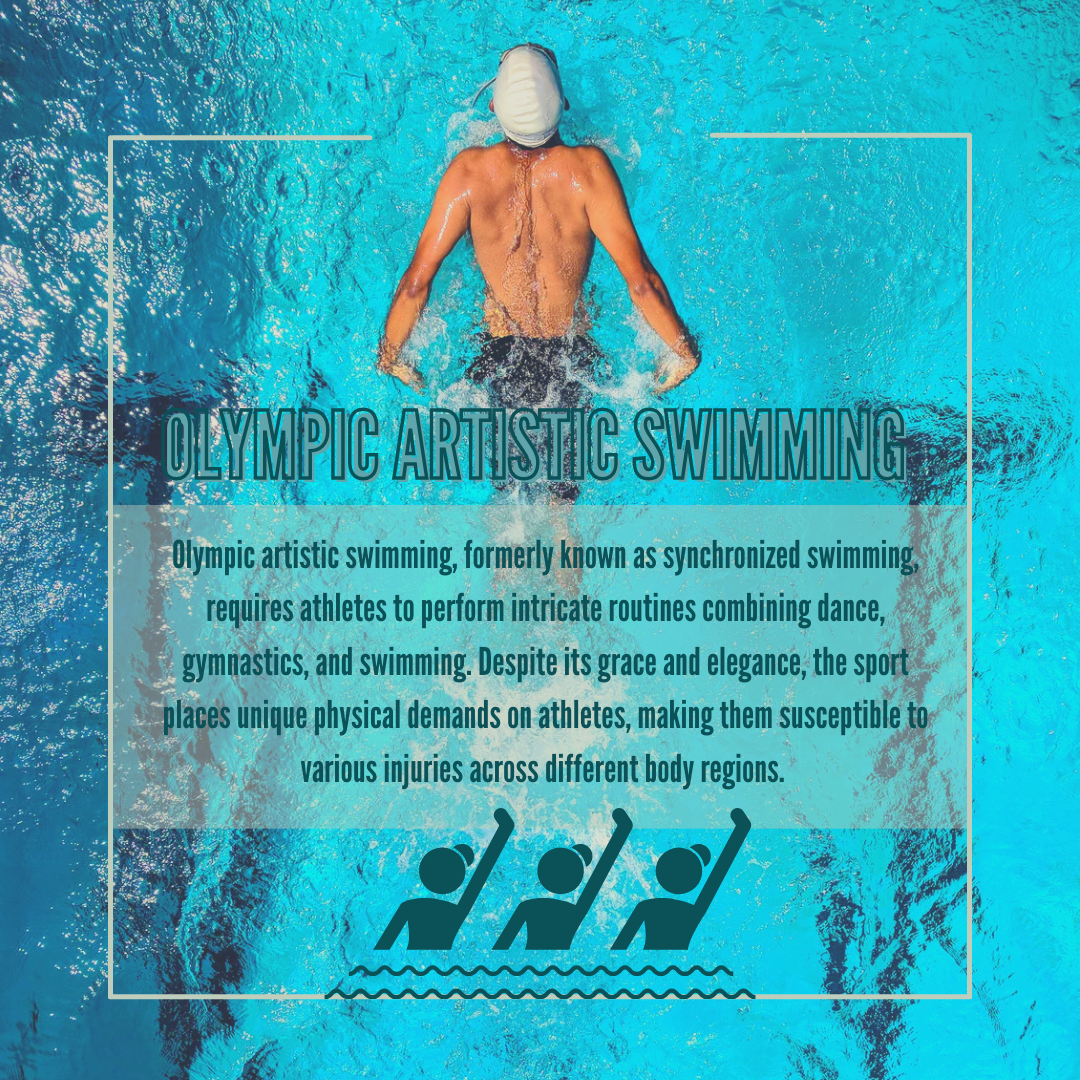Common Injuries in Artistic Swimming
Olympic artistic swimming, formerly known as synchronized swimming, requires athletes to perform intricate routines combining dance, gymnastics, and swimming. Despite its grace and elegance, the sport places unique physical demands on athletes, making them susceptible to various injuries across different body regions.
Upper Limb Injuries
Shoulder Injuries
Rotator Cuff Tears: These tears can occur due to the repetitive overhead movements involved in lifting and supporting body weight in water.
Shoulder Impingement: Overuse and improper technique can lead to compression of shoulder tendons, causing pain and limited mobility.
Elbow Injuries
Lateral Epicondylitis (Tennis Elbow): Inflammation of the tendons on the outer elbow from repetitive actions such as arm extensions and lifts.
Medial Epicondylitis (Golfer’s Elbow): Less common but possible due to repetitive forearm movements and lifts.
Lower Limb Injuries
Knee Injuries
Patellar Tendinitis: Known as jumper's knee, caused by repetitive kicking and leg movements.
Meniscus Tears: Twisting movements underwater can lead to tears in the knee cartilage.
Back Injuries
Muscle Strains: Strain in the back muscles due to maintaining streamlined positions and lifting movements.
Spinal Stenosis: Compression of the spinal nerves from repetitive hyperextension during routines.
Other Injuries
Wrist and Hand Injuries
Wrist Sprains: Ligament injuries from underwater flips and hand movements.
Hand Fractures: Rare but possible from impact with the pool floor or wall.
Neck Injuries
Cervical Strain: Strain from maintaining head-supported positions during lifts and spins.
Whiplash: Sudden neck movements during routines can cause soft tissue injuries.
Physiotherapy Treatment
Physiotherapy is vital in managing injuries in artistic swimming, focusing on pain relief, functional recovery, and injury prevention. Treatment includes initial rest and ice to reduce inflammation, followed by manual therapy such as massage and joint mobilisation to improve range of motion and reduce muscle tension. Strengthening exercises target specific muscles to enhance stability and prevent future injuries. Postural training ensures proper alignment during routines, while ergonomic adjustments to technique and equipment minimise stress on injured areas. Balance and functional training improve stability and coordination, crucial for maintaining performance in the water.
Conclusion
Injuries in Olympic artistic swimming, despite its graceful appearance, can impact athletes' performance and require specialised care. Understanding these common injuries and their prevention strategies empowers athletes to maintain peak performance and seek timely treatment when needed. Physiotherapy interventions are essential for managing injuries effectively and supporting athletes in achieving their competitive goals in this demanding and visually captivating sport.
